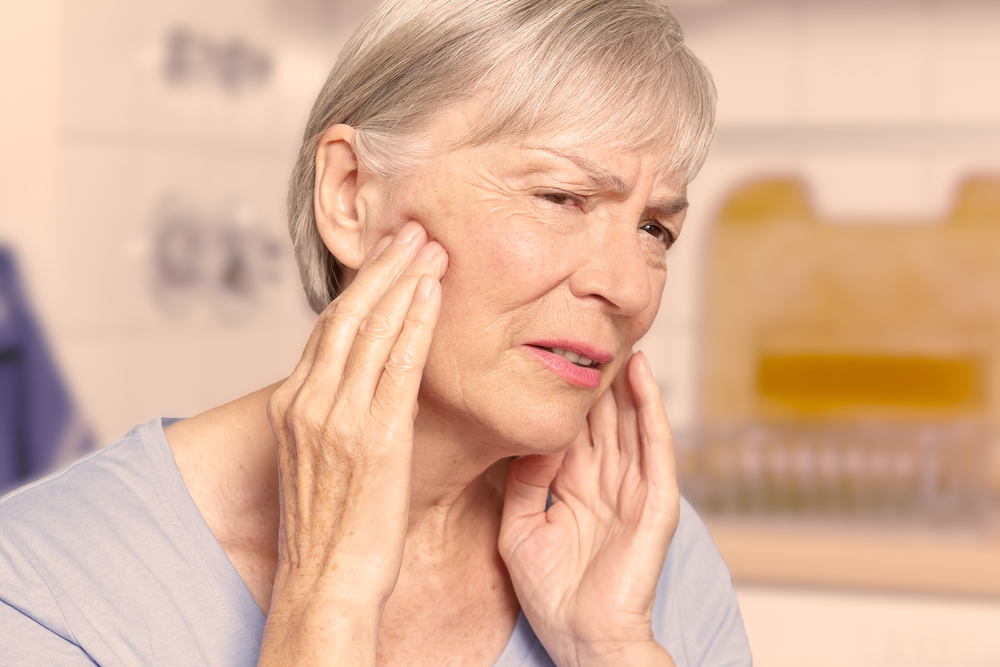TMJ dysfunction is a very common chronic condition affecting at least 10 million people. Also called temporomandibular joint and muscle syndrome, it refers to a group of conditions that inflame and tighten the jaw joint.
The muscles, bones, tendons, and ligaments surrounding your jaw joint work together to move your jaw forward and back, up and down, and side to side. However, if you frequently overstretch your jaw or grind your teeth, your jaw can become stiff and painful. Other TMJ dysfunction symptoms can include:
- Pain in your neck and shoulders.
- Chronic headaches.
- Limited movement or locking of your jaw.
- Ear pain or pressure.
- Grating in your jaw joint when opening or closing your mouth.
- A “popping” sound when moving your jaw.
What causes TMJ dysfunction?
TMJ dysfunction symptoms can be caused by a variety of conditions, like teeth grinding, stress, arthritis, overextension and injury. These causes can damage your jaw tissue and cause it to swell. Other factors, like genetics, can make you more susceptible to developing TMJ symptoms as you get older. In addition, women are at least twice as likely to develop TMJ disorders than men.
If your doctor or dentist suspects you have a TMJ disorder, they may order tests such as dental X-rays, CT scans and MRIs. These tests can help you and your medical team better understand the causes of your TMJ dysfunction, as well as what can be done to limit flare-ups.
Early treatment of TMJ symptoms can be important to your overall well-being. In some cases, TMJ dysfunction can lead to chronic jaw pain and migraines if left untreated. You should seek immediate medical attention if your jaw stiffness and pain is accompanied by the following symptoms:
- Pain that began after a face injury.
- Pain that impedes eating.
- Dizziness.
- Vision loss.
You should also seek medical attention if your symptoms have lasted for more than seven days at a time, and if you have a family history of serious TMJ dysfunction.
5 natural home remedies for TMJ pain
Unfortunately, TMJ pain can come in unexpected waves called flare-ups. Flare-ups can be caused by jaw overuse or jaw misalignment. Thankfully, there are several natural home remedies that can help ease your TMJ pain in the middle of a flare-up. Some natural home remedies for TMJ pain include:
- Stretching — TMJ flare-ups can cause your jaw to lock in place; it can be extremely painful and difficult to perform daily activities like eating and speaking. Jaw stretches can encourage blood flow to the inflamed joint and gently engage your muscles. You can even apply pressure to the tissue around your jaw and neck to encourage circulation and decrease muscle tightness while stretching. As a result, stretches can be a crucial natural home remedy for TMJ pain.
- Strengthening the jaw — TMJ pain and inflammation can cause jaw stiffness, but keeping your jaw in the same position for long periods of time can make your pain worse. Performing jaw exercises that strengthen weak jaw muscles can boost your mobility and encourage your jaw joint into proper alignment. Strengthening exercises can also protect your jaw against overuse injuries and further damage.
- Stabilizing the jaw— TMJ pain can worsen when your upper and lower teeth are misaligned. You can help train your jaw to remain in a consistent position with devices like splints. Splints are mouth guards that can hold your jaw in place while sleeping. As many instances of jaw misalignment can be caused by teeth grinding, splints prevent it from happening in the first place. With the use of a splint and physical therapy exercises, your jaw can feel more stabilized.
- Applying ice or heat — Generally, applying heat to an injured area can increase blood blow and release muscular tension. On the other hand, applying ice limits blood flow to the area in order to reduce swelling and inflammation. You can alternate between these treatments to get optimum pain relief. As a result, heat and ice can be prime natural home remedies for TMJ pain.
- Virtual PT — To achieve long-term pain relief from TMJ dysfunction, you may need professional help. Virtual physical therapy gives you access to a physical therapist in the comfort of your own home. As a result, you can learn stretches and exercises that are tailored to your specific TMJ disorder symptoms.
Agile Virtual PT can help you find effective and natural home remedies for your TMJ pain
Dealing with TMJ pain by yourself can be frustrating. Thankfully, you don’t have to go through it alone. Our team of certified physical therapists at Agile Virtual Physical Therapy can partner with you to ease your TMJ pain and identify effective natural home remedies. Contact us today for more information or to schedule an initial appointment.

